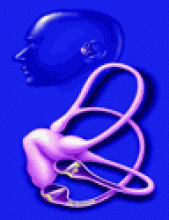Our study documented the physical findings of a large group of children who had suffered a severe shaking injury.1 As noted in the article, we did not identify a control group and therefore were unable to compare the rate of bruising within our population with that of children who had not been subjected to a severe shaking injury. The intention of the bruising report was to highlight the large number of children who, despite a severe injury, had no external signs of injury and presented with subtle clinical findings.
Health care professionals are mandated by law to report suspected cases of child abuse. However, such a report is not a diagnosis or an accusation. Additional investigation by a child welfare agency will help to determine whether abuse or neglect is a concern. More reports of suspected abuse should be investigated than the number of cases of actual abuse that are found, just as more lumps will be investigated than turn out to be cancer and more coughs than turn out to be pneumonia. When abuse is suspected, evaluation by a child abuse and neglect team, along with a careful pediatric examination, rarely results in misdiagnosis (in less than 1% of cases).2 In contrast, early studies of abused children discharged to their parents without any intervention indicated that 25% are seriously reinjured and 5% are subsequently killed.3
Because of the prevalence of maltreatment,4 it is important that physicians have the skills to recognize its signs and symptoms. Physicians should carefully evaluate all bruising in infants younger than 9 months of age and those who are not yet beginning to ambulate.5 In children of any age, bruises located in atypical areas, such as the trunk, hands or buttocks, are also of concern. Unfortunately, our residency programs may not provide the necessary training — even pediatric residents have little exposure to child protection issues during their clinical training.6 A child welfare investigation may be a difficult experience for all involved and, as shown by our study2 and others,7 the consequences for the child are potentially grave if there is a failure to refer early and evaluate appropriately.
W. James King Chief, Division of Pediatric Medicine Morag MacKay Director, Child and Youth Injury Prevention Centre Susan Bennett Head, Child & Youth Protection Service Children's Hospital of Eastern Ontario Ottawa, Ont.








